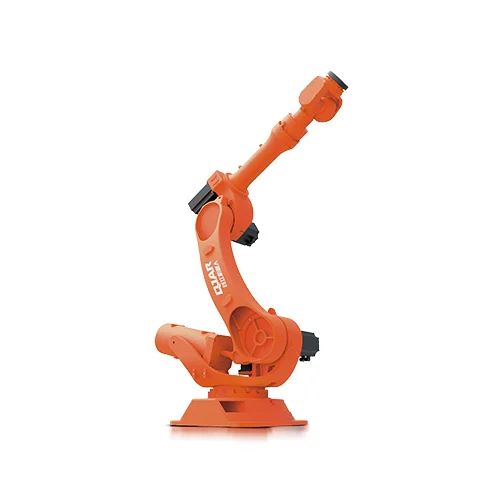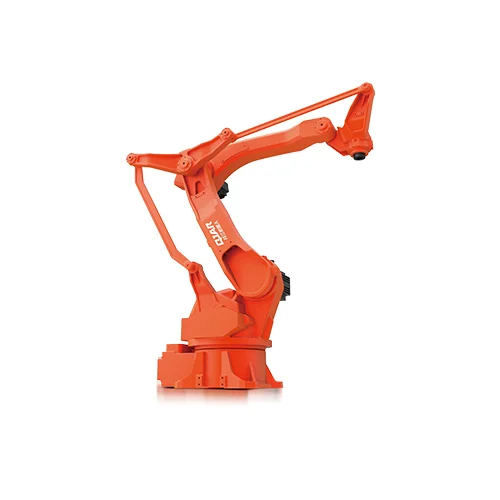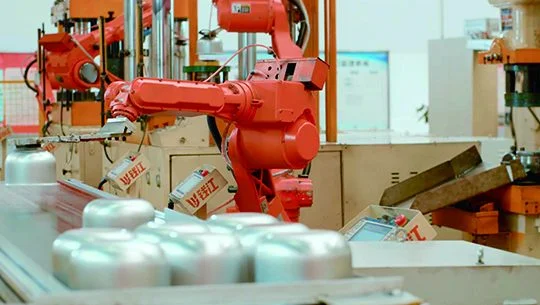Introduction
The manufacturing industry experiences continuous transformations as a result of technological progress, particularly the integration of robotics. Pick and place robots and polishing robots are two essential classifications of industrial robots that are notably enhancing the precision and efficiency of manufacturing operations. This article examines the consequences and functionalities of the QJR210-1 Polishing robot and the QJRB15-1 Pick and place robot, two exceptional models. Designed to operate in contemporary manufacturing settings, each of these models possesses exceptional qualities.
Technological Aspects and Benefits
Robot for polishing: QJR210-1
The QJR210-1 Polishing Robot serves as a prime example of robotic engineering perfection; in addition to polishing, it is also capable of palletizing, loading and offloading, and welding, among other tasks. With an armspan of 2688mm and a payload capacity of 210kg, this robot is ideally suited for manipulating large or weighty objects that demand meticulous finishing. The 0.2mm repeat positioning accuracy is of the utmost importance in sectors such as automotive manufacturing, where even the most minute flaws are deemed intolerable, in order to attain the desired high-quality finish. This robot is a cornerstone among polishing robots due to its exceptional performance in high-volume production environments, which is facilitated by its broad motion range and rapid velocity.

QJRB15-1 Pick and Place Robot
In contrast, the QJRB15-1 Pick and Place Robot is designed with high-frequency duties in mind, prioritizing both speed and accuracy. Owing to its 15kg payload capacity and 1510mm reaching distance, this product is ideally suited for the rigorous demands of sectors including electronics and food and beverage. The robot’s ability to execute rapid motions, reaching speeds of 544º/s, substantially improves throughput. Additionally, its precise repeat positioning with a ±0.05mm accuracy guarantees cautious handling of even the most minute components. The aforementioned degree of accuracy and velocity is critical for pick and place robots, which operate in assembly lines where each second counts.

Implementation in Industry
In industries such as aerospace and automotive, which demand both aesthetic appeal and precise engineering, polishing robots such as the QJR210-1 are indispensable. The consistent quality and repeatability that these devices deliver is challenging for human laborers to attain. Pick and place devices have become essential instruments in the electronics sector, facilitating the assembly of circuit boards with an exceptional degree of velocity and accuracy that exceeds the capabilities of manual labor. As an illustration, the QJRB15-1 possesses the ability to promptly assemble minute and fragile electronic components, thus augmenting production efficiency and reducing wastage.
Case Study: Production Enhancement in the Cookware Industry
An instance that effectively demonstrates the worth of these robots is the recent implementation of QJRB20-1 pick and place robots during the fabrication process of stainless steel cookware. By leveraging teaching-free technology, this robotic system facilitated seamless line adjustments and autonomous digital production. This not only optimized the manufacturing process but also achieved a 10% reduction in energy consumption by utilizing frequency converters and energy-efficient servo actuators. In addition, remote monitoring and maintenance were made possible through the robot’s integration with a self-developed SCADA system, demonstrating how pick and place robotics can substantially improve operational sustainability and efficiency.

A Comparative Examination of Conventional Approaches
A comparative analysis of conventional manufacturing techniques and those employing pick and place robots and polishing robots demonstrates significant disparities in terms of cost, quality, and efficiency. Conventional approaches frequently necessitate additional manpower, time, and error rates; these drawbacks are diminished through the implementation of robotic technology. As an illustration, polishing robots attain a degree of surface finish consistency that is exceedingly challenging to duplicate through manual means. In a similar fashion, pick and place robotics expedite the manufacturing process and decrease material waste, resulting in an immediate return on investment. Furthermore, the presence of these robots alters the composition of the workforce, generating a demand for technicians with enhanced capabilities in the management and upkeep of complex robotic systems.
Future Developments in Automated Robotics
It is anticipated that continuous progress will augment the functionalities of polishing robots and pick and place robots, thereby auguring positively for the trajectory of robotic automation. The integration of developments in machine learning and artificial intelligence is anticipated to enhance the autonomy of these robots. This will empower them to conduct real-time analyses of production data and arrive at well-informed decisions. As an outcome of these advancements, sectors that have not yet fully embraced automation may attain additional efficiencies and experience greater adoption of robotic systems.

Conclusion
The revolutionary effects of robotics in manufacturing are being spearheaded by pick and place and polishing robots. It is evident from the QJR210-1 and QJRB15-1 instances that these robots are not only transforming existing production methods but also laying the foundation for forthcoming advancements. With the pursuit of increased efficiency, decreased costs, and improved product quality by various industries, the function of these robots will inevitably broaden, facilitating the automation of the intricate processes that contemporary manufacturing demands.

